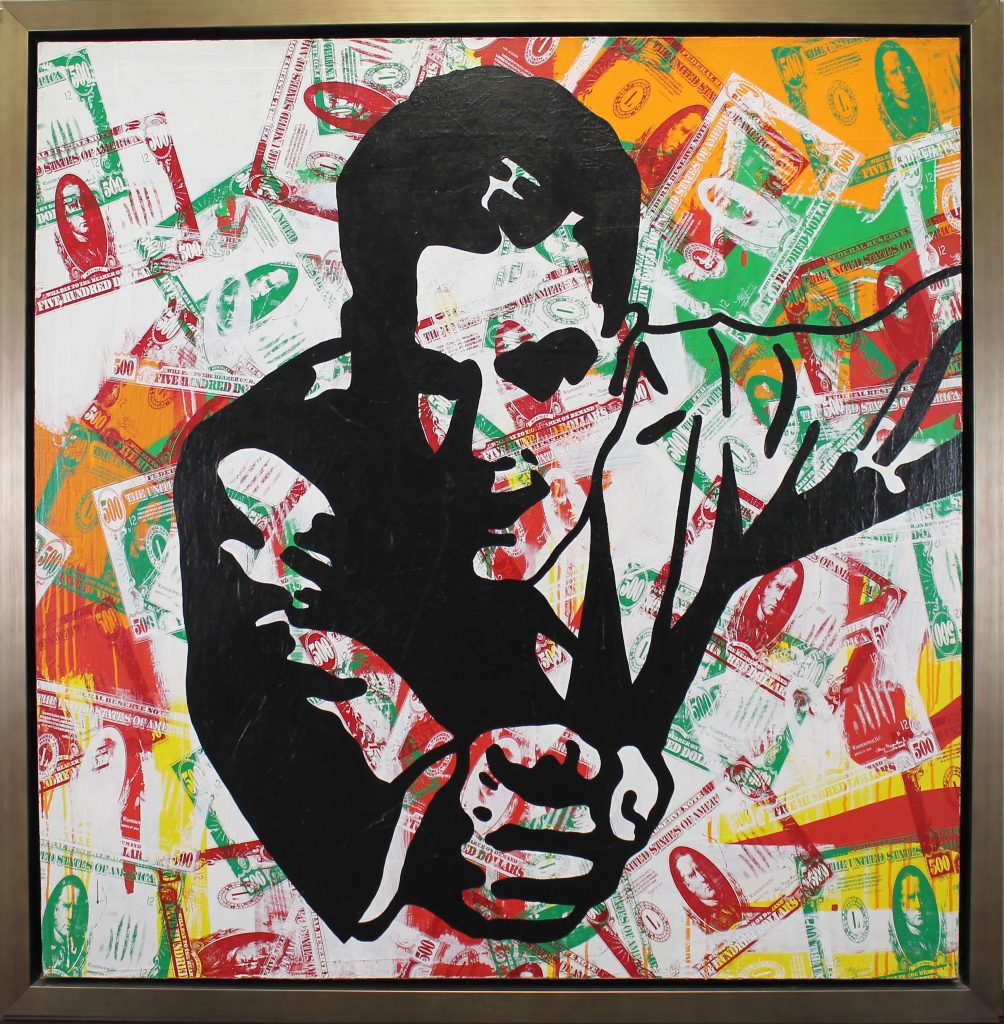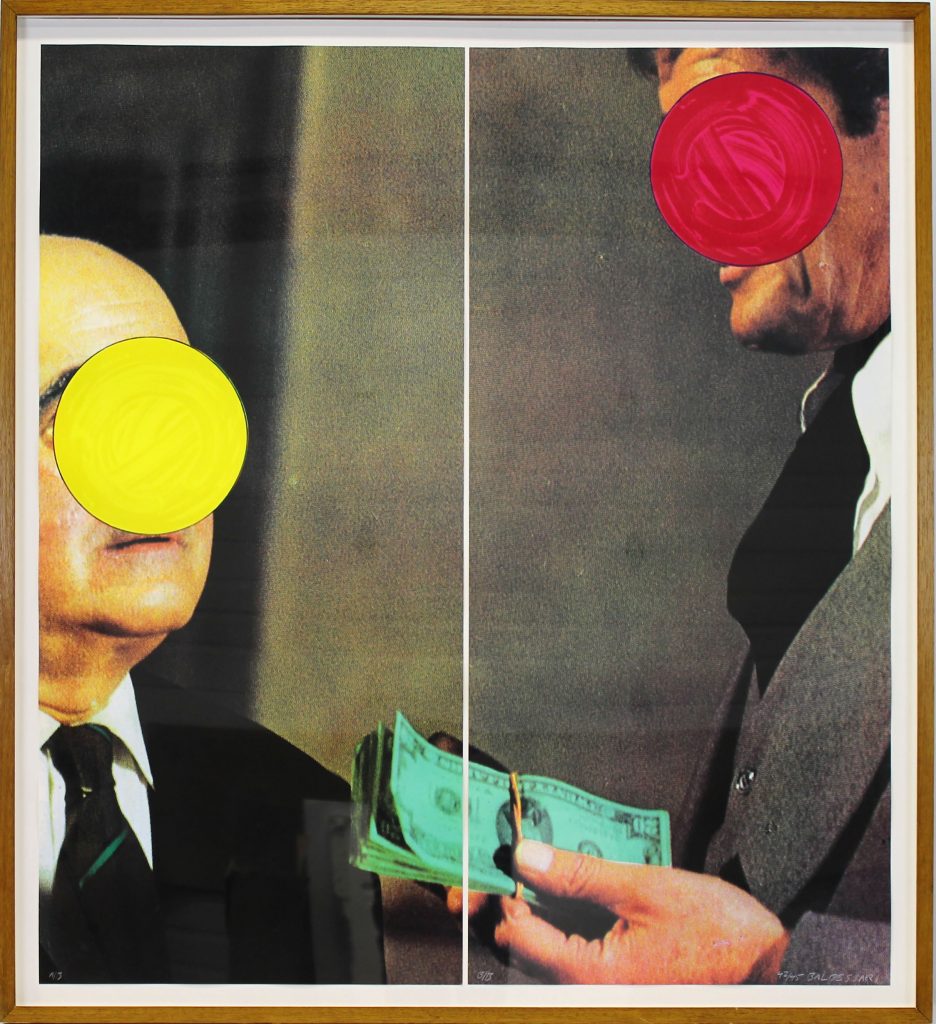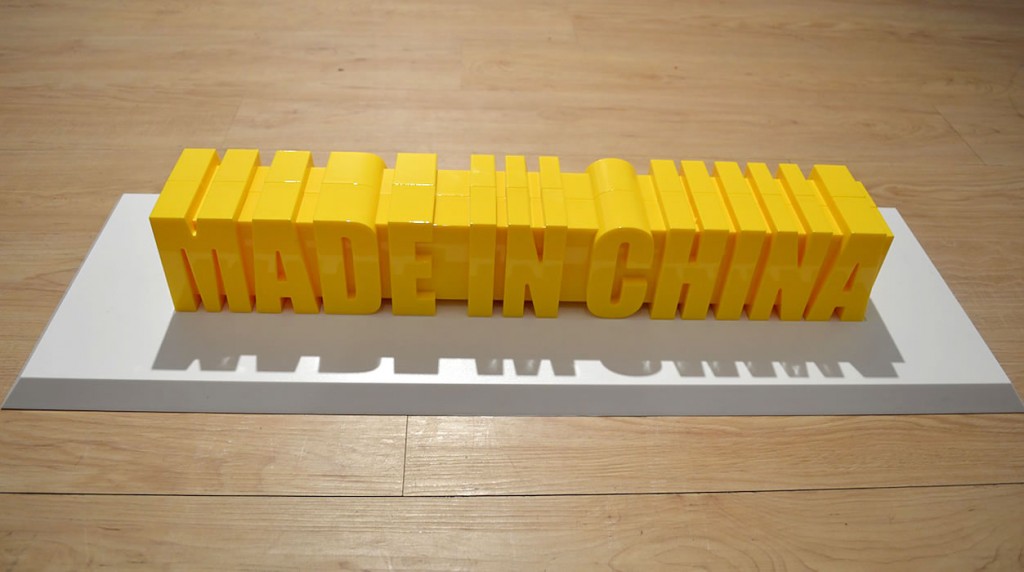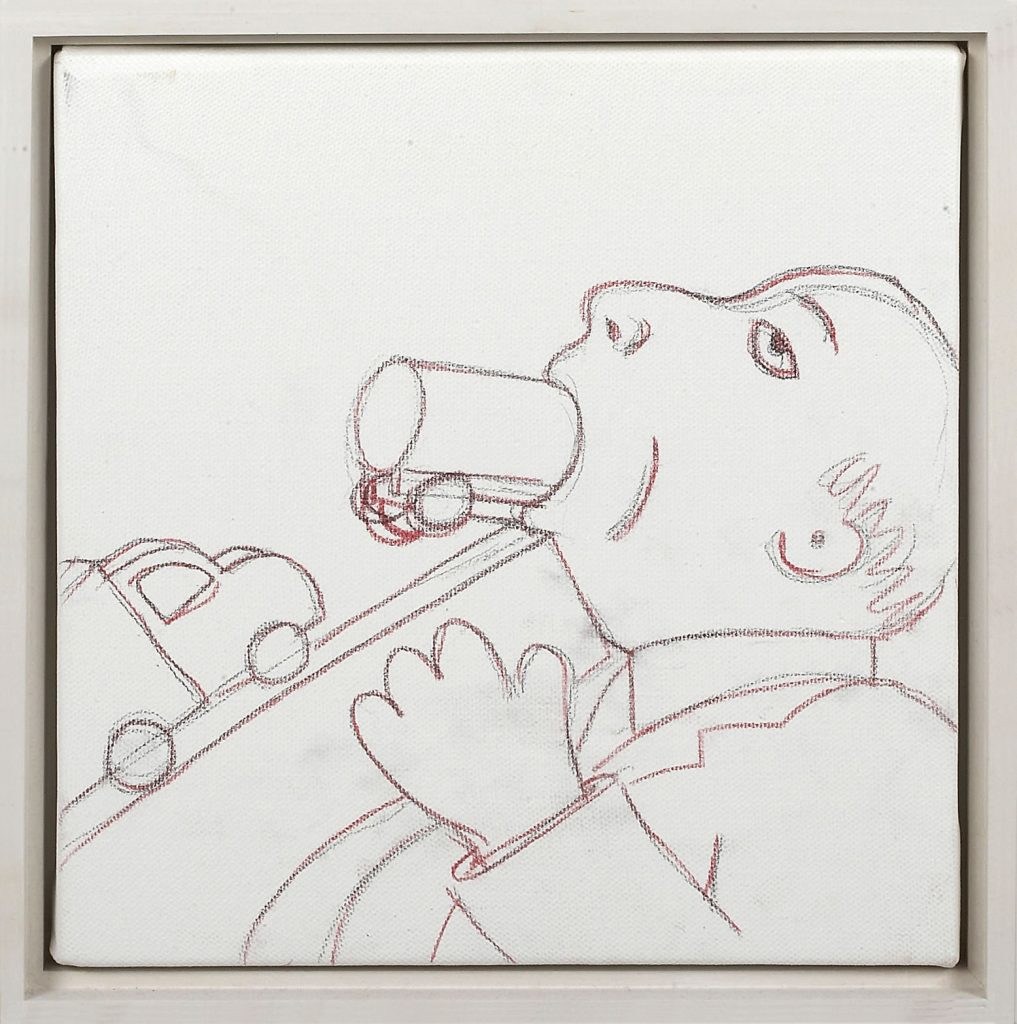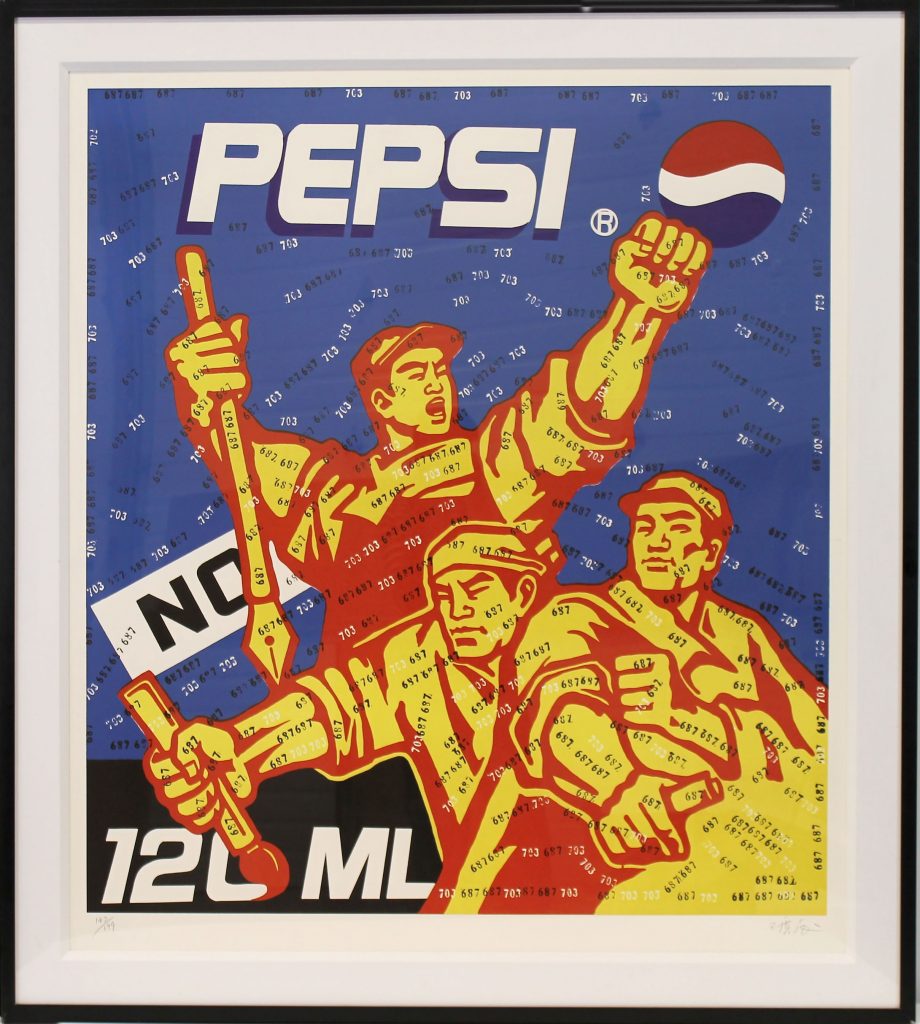Art and politics have come to a head. In our current state of political upheaval, the role of governing and our status quo is being challenged. Art is not only being utilized as a vessel to engage in narratives with this current state, but it is also being challenged to act as an example for change. Recent protests of art institutions for their affiliation with ethically questionable corporations reflect the meta-narrative of the omnipotence of big business in our society. Conversations regarding economics are saturating headlines as events such as the Brexit proposal, corporate accountability, and wealth disparity are encouraging the public to reimagine a more desirable future.
In our new installment of an online exhibition “Who’s Running the Machine?”, we are highlighting works within our collection that touch on the topics of art and politics, specifically relating to capitalism and its influence on culture and global economics, and the impression left on the public that questions who are the people that run these entities.
James Anthony
James Anthony’s “Buy It / Too Buzy” utilizes satire and provides an allegorical look at America’s identity and culture. The mixed media painting on canvas with silk screen draws the viewer in by mimicking the idiosyncratic pose of the U.S federal government, personified in the character, Uncle Sam. Though the suited white male figure mimics the iconic pose of Uncle Sam’s “I Want You!” imagery, his message does not instruct the viewer to join the American Army. Instead the background of dollar bills appears to suggest that the viewer hand over American currency.
John Baldessari
John Baldessari’s “Money with Space Between” plays with the idea of creating a narrative through context imagery. The lithograph with silkscreen in two panels are composed of found imagery of two well-dressed men engaging in a transaction. Baldessari obscures the faces of these two men with his signature circle of paint; this invokes an insidious sense of suspicion for these men. Perhaps they are white-collar men engaging in white collar crime? The question posed leaves room for the viewer’s own investigation.
Sui Jianguo
Sui Jianguo’s “Made in China” is a sculpture of resin and steel that depicts the ubiquitous manufacturing tag “Made in China.” Jianguo brings focus to the topic of international trade affairs involving China as a source for mass production. This work also plays with the idea of accessibility via mass production and distribution, as a buyer from anywhere in the global economy can obtain this piece and contribute to the narrative of how products from China are proliferated throughout the world.
Tom Otterness
Tom Otterness’s “The Consumer” is a witty pencil and crayon drawing on canvas depicting a traffic line of trucks being consumed by a man who appears to be in discomfort trying to digest them all. In modern society’s conversations around over-production leading to waste, “The Consumer” relates to the absurdity that these products are produced far too swiftly for people to effectively swallow.
Wang Guangyi
Wang Guangyi’s “No Pepsi” print edition is an allegorical and symbolic statement about the political entanglement of China’s communist society with global capitalism. The juxtaposition of classic communist imagery alongside the universally identifiable imagery of the Pepsi brand brings into question the imposing influences of Western society. As large corporations often hold political influence and outsized privileges due to their financial involvement with government officials, Guangyi addresses both China’s vulnerability to the Western hemisphere’s financial forces and the seemingly omnipresent influence of major corporations.
Huang Yan
Huang Yan’s “Mao with Dragon” print edition depicts societal uncertainty after a long-reigning era has ended. The juxtaposition of a faded image of Mao Zedong, the former leader of the Republic of China, overlaid with an image of a dragon that appears to be in its own state of distortion reflects a civilization’s transitional stage as it reimagines the future of its state. Considerations of Mao’s notorious disdain of capitalism and his struggle to maintain his ideal of a “Red” society during the last years of his life is evoked here. While his image is symbolically blurred, the viewer is made to question whether his long-standing influence is at the foundation of the future society, or if instead that influence is fading away.
Contact Contemporary Art & Editions for inquiries on purchasing works from the exhibition.
